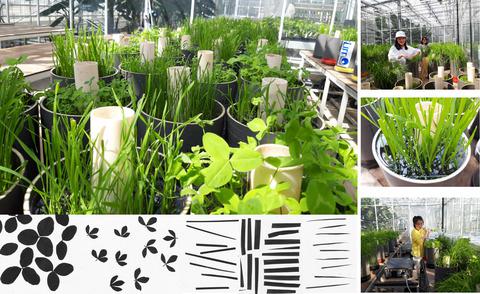当前位置:
X-MOL 学术
›
Funct. Ecol.
›
论文详情
Our official English website, www.x-mol.net, welcomes your feedback! (Note: you will need to create a separate account there.)
Plant traits of grass and legume species for flood resilience and N2O mitigation
Functional Ecology ( IF 5.2 ) Pub Date : 2021-06-26 , DOI: 10.1111/1365-2435.13873 Natalie J. Oram 1, 2, 3 , Yan Sun 1 , Diego Abalos 4 , Jan Willem Groenigen 1 , Sue Hartley 5 , Gerlinde B. De Deyn 1
中文翻译:

草类和豆类植物的抗洪能力和 N2O 缓解的植物特性
更新日期:2021-06-26
Functional Ecology ( IF 5.2 ) Pub Date : 2021-06-26 , DOI: 10.1111/1365-2435.13873 Natalie J. Oram 1, 2, 3 , Yan Sun 1 , Diego Abalos 4 , Jan Willem Groenigen 1 , Sue Hartley 5 , Gerlinde B. De Deyn 1
Affiliation

|
- Flooding threatens the functioning of managed grasslands by decreasing primary productivity and increasing nitrogen losses, notably as the potent greenhouse gas nitrous oxide (N2O). Sowing species with traits that promote flood resilience and mitigate flood-induced N2O emissions within these grasslands could safeguard their productivity while mitigating nitrogen losses.
- We tested how plant traits and resource acquisition strategies could predict flood resilience and N2O emissions of 12 common grassland species (eight grasses and four legumes) grown in field soil in monocultures in a 14-week greenhouse experiment.
- We found that grasses were more resistant to flooding while legumes recovered better. Resource-conservative grass species had higher resistance while resource-acquisitive grasses species recovered better. Resilient grass and legume species lowered cumulative N2O emissions. Grasses with lower inherent leaf and root δ13C (and legumes with lower root δ13C) lowered cumulative N2O emissions during and after the flood.
- Our results highlight the differing responses of grasses with contrasting resource acquisition strategies, and of legumes to flooding. Combining grasses and legumes based on their traits and resource acquisition strategies could increase the flood resilience of managed grasslands, and their capability to mitigate flood-induced N2O emissions.
中文翻译:

草类和豆类植物的抗洪能力和 N2O 缓解的植物特性
- 洪水通过降低初级生产力和增加氮损失来威胁管理草地的功能,特别是作为强效温室气体一氧化二氮 (N 2 O)。在这些草原内播种具有促进洪水恢复能力和减轻洪水引起的 N 2 O 排放的特性的物种,可以保护它们的生产力,同时减少氮损失。
- 在为期 14 周的温室试验中,我们测试了植物性状和资源获取策略如何预测单一栽培田间土壤中生长的 12 种常见草原物种(8 种草和 4 种豆科植物)的洪水恢复力和 N 2 O 排放量。
- 我们发现草更能抵抗洪水,而豆类恢复得更好。资源保守型草种抗逆性较高,而资源获取型草种恢复较好。有弹性的草和豆类物种降低了累积 N 2 O 排放量。具有较低固有叶和根 δ 13 C 的草(以及具有较低根 δ 13 C 的豆科植物)在洪水期间和洪水之后降低了累积 N 2 O 排放。
- 我们的研究结果突出了具有对比资源获取策略的草和豆科植物对洪水的不同反应。根据草类和豆类的特性和资源获取策略将草类和豆类结合起来,可以提高管理草地的抗洪能力,以及减轻洪水引起的 N 2 O 排放的能力。


























 京公网安备 11010802027423号
京公网安备 11010802027423号